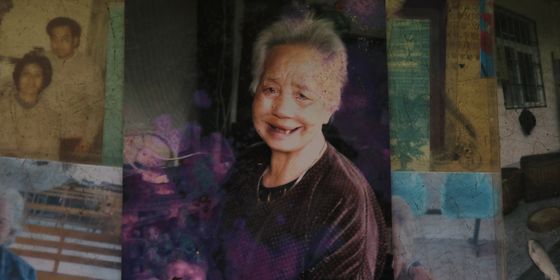Over 30 years after China’s first diagnosed HIV/AIDS case, patients still battle stigma and ignorance
“Can you call me tomorrow morning? Right now, he’s here with me and I can’t talk about ‘it,’ you know what I mean?” 27-year-old Laurel writes to TWOC on WeChat. “He” is Laurel’s legal husband (though she still calls him “fiancé”), and Laurel indicates she would only be available to chat before he gets home each day at 5:30 p.m.
Laurel, who works at a jewelry store in China’s southeastern Fujian province, is one of an estimated 1.3 million people in the country living with HIV, according to a survey published earlier this year. She says there are “less than five people” who know of her condition, including her doctor and her mother, but her husband is not one of them. “Honestly, I don’t know how he is going to react,” says Laurel, describing her daily life as “walking on a wire.”
Since the world’s first case of AIDS (acquired immunodeficiency syndrome) was diagnosed in San Francisco in 1981, the lives of people with HIV have become increasingly visible—even shown on TV, as in the BBC series It’s a Sin. In China, however, the disease remains a socially taboo subject.
Chinese researchers diagnosed the country’s first AIDS case in 1985 and its first locally transmitted infection in 1990. In the following decade, the mysterious, deadly disease ravaged parts of the country, fueled partly by tainted blood transfusions. In the mid-90s in central China’s Henan province, 70 percent of households in some villages reported at least one person infected with HIV.
In the 1990s, China’s response to the AIDS epidemic focused mainly on treating infected people and monitoring certain groups, including sex workers, long-distance truck drivers, and pregnant women, as well as people who injected drugs, those who sought treatment for sexually transmitted diseases, and men who had sex with men (MSM).
In 2003, China’s then-Premier Wen Jiabao unveiled a broader response program called the “Four Frees and One Care.” The initiative offered free antiretroviral drugs to AIDS patients in rural areas and those with financial difficulties; free HIV testing and counseling; free drugs for HIV-infected pregnant women to reduce mother-to-child transmission; free testing for newborns; and schooling for children orphaned by AIDS. Since 2013, China has provided universal access to HIV medications.
In 2005, China diagnosed 40,711 total people living with HIV/AIDS, with 5,729 deaths documented. Up until 2018, the most recent year when data is publicly available, however, the number has skyrocketed to 820,756 with 253,031 deaths. Researchers believe there is a huge gap between these figures and the actual number of infected people, partly due to society’s stigmatization and ignorance of the disease, which leads people to avoid seeking diagnosis.
The demographics of people living with HIV in China are also changing. Whereas the virus used to be prevalent among blood donors and high-risk injection drug users in southern border provinces, where narcotics smuggling is a persistent social issue, current data indicates that HIV rates are rising among MSM, young people between the ages of 15 and 24, sex workers, and seniors.
China’s Silent Epidemic: HIV/AIDS Patients’ Struggle to Live Life Out of the Shadows is a story from our issue, “Upstaged.” To read the entire issue, become a subscriber and receive the full magazine.













